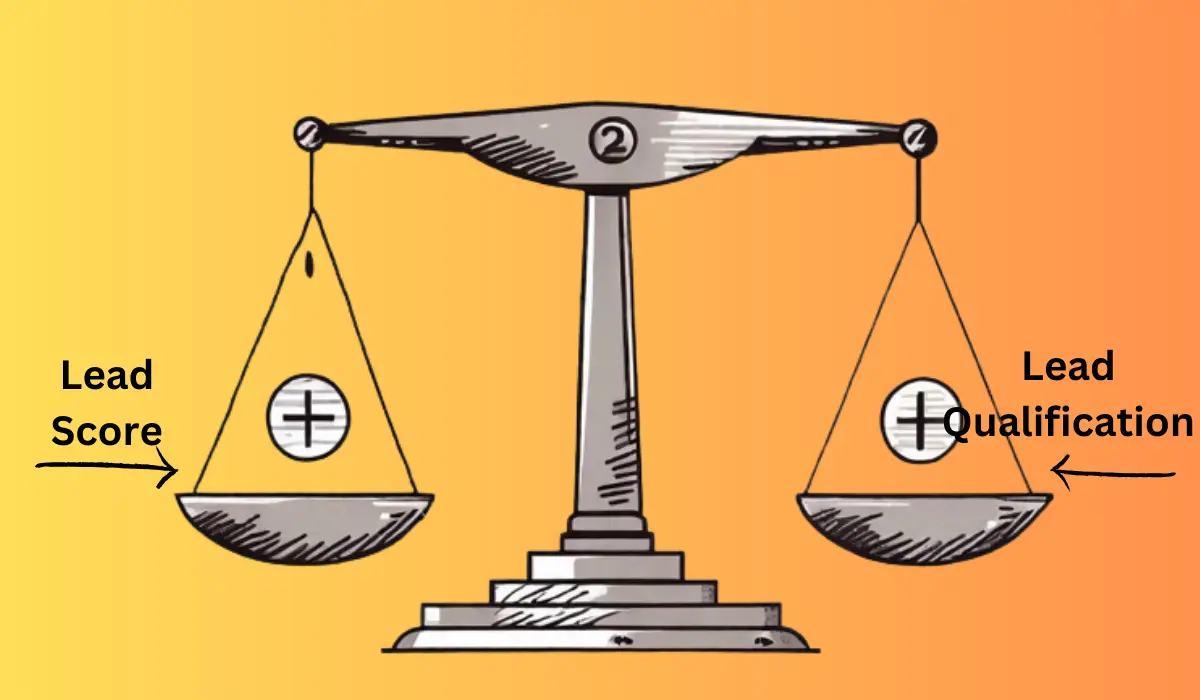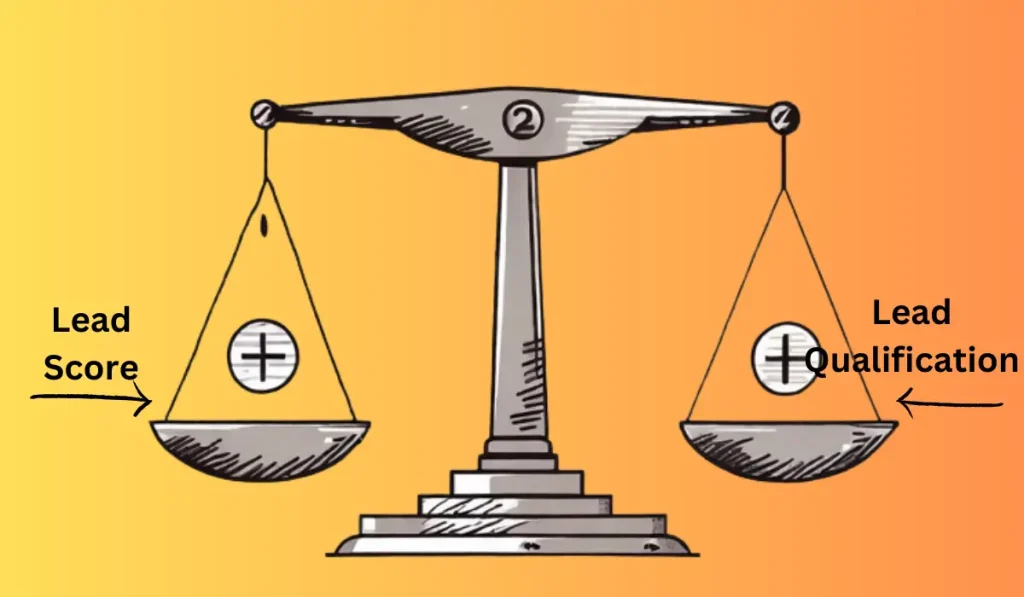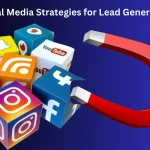In today’s competitive business world, lead generation is just the beginning of the sales funnel. To convert leads into paying customers, companies must prioritize their resources on the most promising prospects. This is where lead scoring and qualification come into play. This article explores the concepts of lead scoring and qualification, highlighting their importance, methods, and best practices for implementation.
What is Lead Scoring?
Lead scoring is a method used by sales and marketing teams to assess and quantify the value of leads. It involves assigning a numerical score to each lead based on predefined criteria that reflect the likelihood of conversion. These criteria can be based on various factors, including demographic information, behavior, engagement, and interactions with your company.
Why Lead Scoring Matters
Lead scoring matters because it provides a structured and data-driven approach to prioritizing sales and marketing efforts. It plays a crucial role in optimizing resource allocation, improving team alignment, and ultimately driving business growth. Here are the key reasons why lead scoring matters:
1. Resource Optimization
Lead scoring helps sales and marketing teams focus their efforts on leads with the highest potential for conversion. This optimization ensures that time, energy, and resources are used efficiently, maximizing the return on investment (ROI) for sales and marketing activities.
2. Improved Sales and Marketing Alignment
Lead scoring creates a common language between sales and marketing teams. By having a shared understanding of what constitutes a valuable lead, both teams can work toward the same goals, reducing miscommunication and enhancing collaboration.
3. Faster Lead Qualification
Lead scoring accelerates the lead qualification process by quickly identifying leads that are ready for engagement. This speed allows sales teams to respond to high-potential leads promptly, reducing the risk of losing them to competitors.
4. Enhanced Customer Experience
Lead scoring allows sales teams to tailor their approach based on the lead’s interests and level of engagement. This personalized approach leads to more meaningful interactions. It can improve customer satisfaction and increase conversion.
5. Higher Conversion Rates
By focusing on high-scoring leads, sales teams can concentrate on leads with a greater probability of conversion. This focus often leads to higher conversion rates, which can drive revenue growth and business success.
6. Reduced Cost of Acquisition
Effective lead scoring helps identify leads that are more likely to convert, reducing the cost per acquisition. By concentrating efforts on qualified leads, companies can avoid wasting resources on leads that are less likely to result in a sale.
7. Data-Driven Decision Making
Lead scoring is based on data and analytics, allowing companies to make informed decisions about their sales and marketing strategies. This data-driven approach provides insights into customer behavior, allowing for continuous improvement and refinement of lead generation and qualification processes.
8. Better Measurement and Analysis
Lead scoring systems provide metrics that help measure the effectiveness of marketing campaigns and sales activities. This measurement allows companies to track the success of their efforts and adjust their strategies as needed to meet their goals.
9. Scalability and Consistency
A well-implemented lead scoring system is scalable, allowing companies to handle increased lead volumes as they grow. It also ensures consistency in the lead qualification process, leading to a reliable and repeatable sales pipeline.
10. Identification of Upsell and Cross-Sell Opportunities
Lead scoring can help identify existing customers who are open to upsell or cross-sell opportunities. By scoring customer engagement and activity, companies can discover additional sales opportunities within their existing customer base.
Key Factors for Lead Scoring
Lead scoring involves assigning a numerical score to leads based on various factors that indicate their likelihood of converting into paying customers. To build an effective lead scoring system, it’s essential to consider a variety of factors that can reflect a lead’s potential value to the business. Here are some of the key factors for lead scoring:
1. Demographics
Demographic information provides insights into the lead’s fit with your product or service. Key demographic factors to consider include:
- Location: Does the lead reside in a region where your product/service is available?
- Industry: Is the lead’s industry relevant to your offerings?
- Company Size: Does the lead’s company have the resources to purchase your product?
- Job Title: Does the lead’s role influence purchasing decisions?
2. Behavioral Data
Behavioral data reflects how leads interact with your marketing and sales efforts. Important behavioral factors include:
- Website Visits: How frequently does the lead visit your website, and which pages do they view?
- Content Downloads: Does the lead download whitepapers, eBooks, or other resources?
- Email Engagement: Does the lead open your emails and click on links?
- Event Participation: Does the lead attend webinars, trade shows, or other events?
3. Sales Interactions
Leads who interact with your sales team often show a higher level of interest. Consider these factors:
- Phone Calls: Does the lead initiate or engage in phone calls with your sales team?
- Meetings/Demos: Has the lead attended sales meetings or product demonstrations?
- Inquiries: Does the lead ask specific questions about your product or pricing?
4. Engagement and Involvement
A lead’s level of engagement with your company and broader community can indicate their interest. Look at these aspects:
- Social Media Activity: Does the lead interact with your company on social media platforms?
- Community Involvement: Is the lead involved in industry groups or forums where your company is active?
5. Technology Stack
Understanding the technology a lead’s company uses can help gauge their compatibility with your product. Key considerations include:
- Current Tools: Does the lead’s company use tools or software that complement your product?
- Infrastructure: Does the lead’s company have the necessary infrastructure to implement your solution?
6. Customer Journey Stage
Leads at different stages in the customer journey have varying levels of readiness to buy. Evaluate where the lead is in their journey:
- Awareness: Is the lead just learning about your company and products?
- Consideration: Is the lead comparing your product with others?
- Decision: Is the lead ready to make a purchase decision?
7. Firmographic Data
Firmographics provide information about the lead’s company. Key factors include:
- Revenue: Does the lead’s company have the budget to purchase your product?
- Company Growth: Is the lead’s company growing, indicating a need for your product?
- Market Position: Is the lead’s company a market leader or follower?
8. Past Purchases
For existing customers, past purchases can be a strong indicator of future sales opportunities. Consider:
- Purchase History: Has the lead’s company bought from you before?
- Repeat Business: Does the lead’s company regularly buy products similar to yours?
Implementing Lead Scoring
Implementing lead scoring involves designing and executing a system to assign numerical values to leads based on their potential to become customers. Effective lead scoring systems are data-driven, collaborative, and adaptable to changing business needs. Here’s a step-by-step guide to help you implement lead scoring successfully:
Step 1: Define Scoring Criteria
Begin by identifying the key factors that indicate a lead’s value and likelihood of conversion. This step requires collaboration between sales and marketing teams to ensure all relevant criteria are included. Consider the following categories when defining scoring criteria:
- Demographics: Age, location, industry, job title, etc.
- Behavioral Data: Website visits, content downloads, email interactions, etc.
- Sales Interactions: Phone calls, meetings, demos, etc.
- Technology Stack: The lead’s use of specific technologies.
- Customer Journey Stage: Awareness, consideration, or decision stage.
- Firmographics: Company size, revenue, and other organizational data.
Step 2: Assign Point Values
Once you’ve defined the criteria, assign point values based on the relative importance of each factor. This process requires weighing each criterion to reflect its impact on conversion. For example:
- High-value criteria (e.g., attending a product demo) might be assigned higher points.
- Lower-value criteria (e.g., opening an email) might receive fewer points. Consider using a point range or scale to ensure that leads can earn scores that accurately reflect their value.
Step 3: Set Scoring Thresholds
Establish scoring thresholds to categorize leads into different groups, such as “hot,” “warm,” or “cold.” This segmentation helps prioritize sales efforts and determine the appropriate follow-up actions. For example:
- Hot Leads: These leads have high scores and are ready for direct sales engagement.
- Warm Leads: These leads require further nurturing before direct sales outreach.
- Cold Leads: These leads have low scores and may need additional time or different marketing efforts.
Step 4: Automate the Lead Scoring Process
Implement automation tools to streamline lead scoring and ensure consistency. A Customer Relationship Management (CRM) system or marketing automation software can automatically track lead behavior, interactions, and other data points to update lead scores in real-time. Automation helps reduce manual work and minimizes the risk of errors.
Step 5: Test and Refine the Lead Scoring Model
Regular testing and refinement are crucial to maintaining an effective lead scoring system. Monitor conversion rates and other key metrics to assess the accuracy of your scoring model. Conduct regular reviews with sales and marketing teams to gather feedback and identify areas for improvement. Make adjustments to the scoring criteria or point values as needed to enhance accuracy.
Step 6: Align Sales and Marketing Teams
Effective lead scoring requires alignment between sales and marketing teams. Ensure that both teams understand the lead scoring system and agree on the criteria, point values, and thresholds. Conduct regular meetings to discuss lead quality, conversion rates, and other relevant metrics. Encourage open communication and collaboration to ensure everyone is working toward common goals.
Step 7: Train and Educate Team Members
Provide training and education to ensure that all team members understand how the lead scoring system works. This training should cover the scoring criteria, point values, automation tools, and best practices for lead qualification and follow-up. A well-trained team will be better equipped to use the lead scoring system effectively.
Step 8: Implement Lead Nurturing Campaigns
Lead scoring helps identify leads that require additional nurturing. Develop lead nurturing campaigns to engage these leads and move them through the sales funnel. Use targeted content, personalized emails, and other strategies to build relationships and increase lead scores over time.
Also Read
Lead Qualification
Lead qualification is the process of evaluating leads to determine their readiness and suitability for further engagement with the sales team. The goal is to identify leads that are most likely to convert into customers, thereby focusing sales resources on the best opportunities. Effective lead qualification involves assessing various factors to determine if a lead has the right characteristics to move forward in the sales process. Here’s an in-depth look at lead qualification and how to implement it successfully.
Why Lead Qualification Matters
Lead qualification is essential for several reasons:
- Resource Efficiency: By qualifying leads, sales teams can prioritize their efforts on leads that are most likely to convert, reducing wasted time and resources.
- Higher Conversion Rates: Qualified leads have a greater likelihood of converting into customers, leading to improved conversion rates.
- Improved Sales Focus: With a clear qualification process, sales teams can focus on high-quality leads, leading to better customer relationships and more personalized interactions.
- Shorter Sales Cycles: Qualified leads are generally more ready to engage with the sales team, leading to shorter sales cycles.
Common Frameworks for Lead Qualification
Various frameworks and methodologies help structure the lead qualification process. Here are some of the most common ones:
BANT Framework
BANT stands for Budget, Authority, Need, and Timeline. It’s a classic framework to assess a lead’s buying readiness.
- Budget: Does the lead have the financial resources to purchase your product or service?
- Authority: Does the lead have the authority to make a purchasing decision, or are they influencers in the process?
- Need: Does the lead have a genuine need for your product or service?
- Timeline: What is the lead’s timeline for making a decision or purchase?
ANUM Framework
ANUM (Authority, Need, Urgency, Money) is a variation of BANT that places more emphasis on authority and urgency.
- Authority: Who has the authority to make purchasing decisions?
- Need: What problem does the lead need to solve?
- Urgency: How urgent is the lead’s need for a solution?
- Money: Does the lead have the budget to proceed with a purchase?
CHAMP Framework
CHAMP (Challenges, Authority, Money, Prioritization) focuses on identifying the lead’s challenges and prioritization of resources.
- Challenges: What challenges is the lead facing, and how can your product solve them?
- Authority: Who has the authority to make decisions?
- Money: What budget is available for addressing the challenges?
- Prioritization: Where does solving these challenges rank among the lead’s priorities?
Best Practices for Lead Scoring and Qualification
Lead qualification is a critical process for sales and marketing teams, enabling them to focus on leads that are most likely to convert into customers. Effective lead qualification involves asking the right questions, gathering relevant information, and applying a structured approach to determine whether a lead is ready for sales engagement. Here are the best practices for lead qualification to help you maximize your sales efficiency and improve conversion rates.
1. Define Clear Qualification Criteria
Start by establishing clear criteria to determine what makes a lead qualified. Common frameworks like BANT (Budget, Authority, Need, Timeline) or ANUM (Authority, Need, Urgency, Money) provide a good starting point. Customize these frameworks to fit your business and industry context.
- Budget: Does the lead have the financial resources to make a purchase?
- Authority: Does the lead have the decision-making power or influence?
- Need: Does the lead have a problem that your product or service can solve?
- Timeline: Is the lead ready to make a decision within a reasonable timeframe?
2. Use Open-Ended Questions
When engaging with leads, use open-ended questions to encourage them to share more information. This approach helps uncover key details about their needs, challenges, and buying intentions. Examples of open-ended questions include:
- “Can you describe the challenges you’re facing?”
- “What goals are you hoping to achieve?”
- “How do you currently address this issue?”
3. Create a Qualification Checklist
A qualification checklist provides a structured approach to lead qualification. It helps sales teams cover all the necessary criteria during interactions with leads. Include items that align with your qualification framework and ensure the checklist is easy to use during conversations.
4. Automate Lead Qualification
Use marketing automation tools and Customer Relationship Management (CRM) systems to automate aspects of lead qualification. Automation allows you to collect and analyze data, ensuring that leads are qualified consistently and that follow-up activities are triggered based on qualification status. Tools with lead scoring features can be particularly useful in streamlining the qualification process.
5. Segment Leads for Effective Follow-Up
After qualifying leads, segment them into appropriate categories. Common segments include “qualified,” “partially qualified,” and “unqualified.” This segmentation helps sales teams prioritize their efforts and tailor their follow-up strategies to each segment’s unique characteristics.
6. Align Sales and Marketing Teams
Ensure that sales and marketing teams are aligned on the qualification process. Regular meetings to discuss lead quality, feedback, and overall strategy can help maintain alignment. This alignment is crucial for ensuring that leads are qualified consistently and that both teams work toward common goals.
7. Train Sales Teams on Qualification Techniques
Provide training to sales teams on lead qualification techniques. This training should cover the qualification framework, how to ask the right questions, and how to document information in the CRM system. A well-trained sales team will be more effective in qualifying leads and moving them through the sales funnel.
8. Focus on Customer Needs
Lead qualification should focus on understanding and addressing customer needs. Sales teams should listen to leads’ pain points and offer solutions that align with their requirements. This customer-centric approach builds trust and increases the likelihood of conversion.
9. Revisit Lead Qualification Regularly
Lead qualification is not a one-time process. Revisit qualified leads regularly to ensure they still meet the criteria for sales engagement. Conditions can change, and leads may move from one segment to another based on their evolving needs or circumstances.
10. Document Lead Interactions
Ensure that all lead interactions are documented in the CRM system. This documentation is crucial for maintaining a record of the qualification process, tracking lead progress, and providing context for future interactions. It also allows for better analysis and reporting on lead qualification outcomes.
Conclusion
Lead scoring and qualification are essential tools for modern sales and marketing teams. Companies can improve their resource allocation, enhance customer experiences, and increase conversion rates by implementing effective systems and aligning teams. The key to success is ongoing refinement, collaboration, and a focus on delivering value to prospects at every stage of the sales funnel





